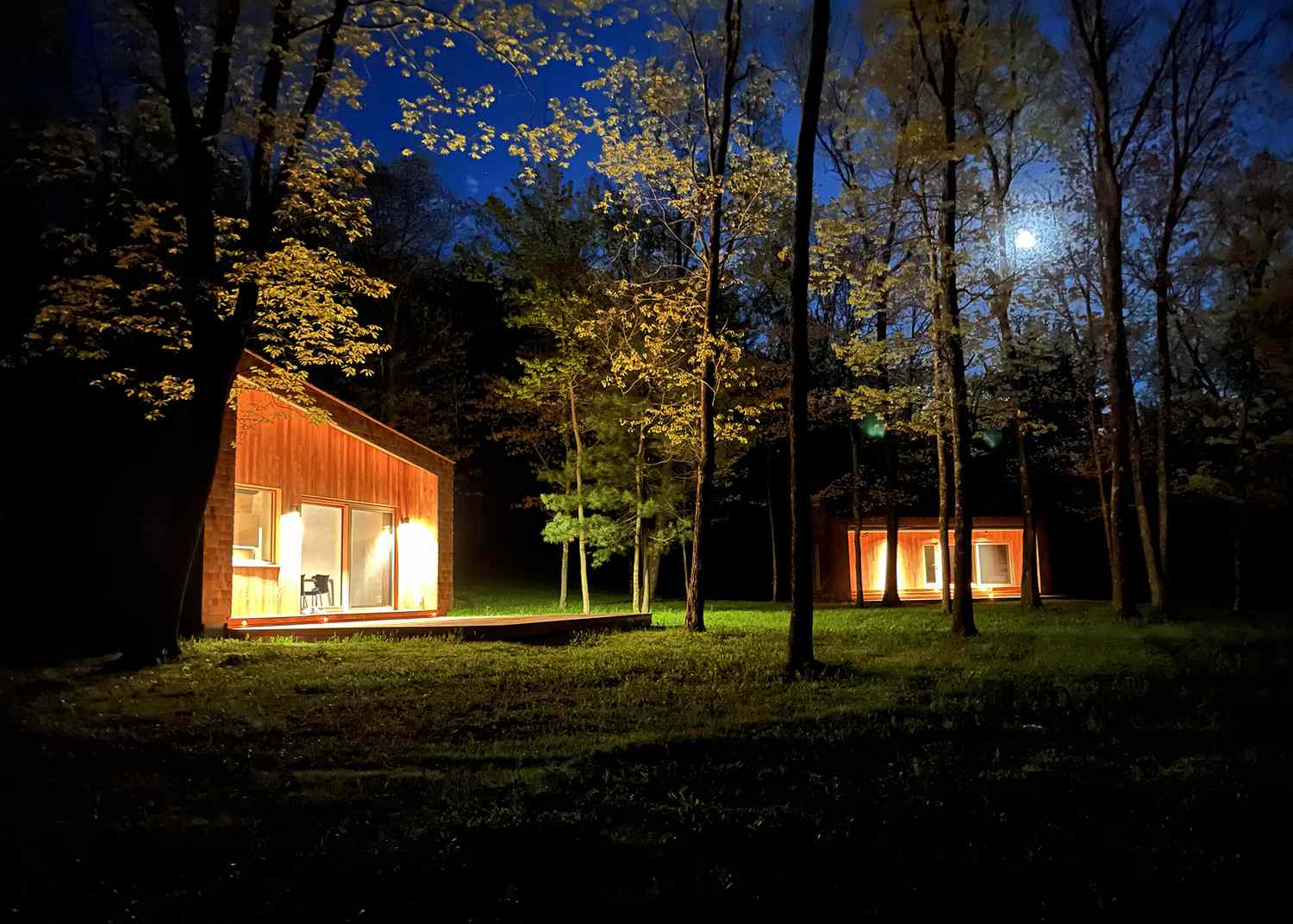
Lengthy-time readers of this website will know that we aren’t the most important followers of the massive houses we frequently see in North American suburbs. Not solely is there numerous wasted house inside, however they take numerous vitality to construct and preserve, and that is not together with the upfront carbon emissions which can be related to the supplies they’re constructed with. We want a radical discount in upfront carbon emissions—particularly within the constructing business—and we want it now, not later.
However convincing folks that we want smaller houses will be an uphill battle, particularly in societies the place the concept of “massive” is usually culturally equated to “higher.” However, that hasn’t deterred multidisciplinary designers like Brooklyn-based Kaja Kühl, who designed two hempcrete micro-home prototypes for a farm in upstate New York.
Accomplished as a collaboration with Pennsylvania-based structure studio Coexist and architect-of-record Roger Cardinal, the houses are supposed as a pair of guesthouses that have been impressed by the standard vernacular structure of native farmworker homes and cabins of the world. As Kühl tells Dezeen:
“[Historic] farmworker homes and cabins within the area, in addition to different components of the USA … typically function an oblong form and a easy pitched roof form that continued to cowl a protracted porch. That they had one room or perhaps a small sleeping nook along with the primary room.”
The 2 constructions share an identical aesthetic however have been deliberately made to look distinct by modifying their roof profiles. One guesthouse includes a conventional gable roof, whereas the opposite sports activities a roof that has a extra dynamic slope to it. Each are clad with cedar wooden shingles and black locust wooden siding, and each are outfitted with giant out of doors decks that broaden the inside house additional outdoors.
Kaja Kühl
However maybe essentially the most notable options of those micro-homes are invisible. For starters, they’re constructed with hempcrete, which is an energy-efficient, water-efficient, and thermally-efficient constructing materials product of hemp and lime, which is a low-carbon different to concrete.
Laszlo Kovacs
The staff consulted with Hempstone, and in accordance with their calculations, the hemp within the two micro-homes sequesters the identical quantity of carbon as 330 tree seedlings grown over a interval of 10 years. She says:
“The hempcrete didn’t disappoint, storing the best quantity of carbon in each constructions. Cellulose can also be spectacular with out the extra well being advantages that hempcrete supplies. In the end, paying nearer consideration to embodied vitality, be it by utilizing extra bio-based supplies or supplies processed with renewable vitality is important to cut back emissions within the important quick time period, setting buildings on a path to lowering emissions of their design and building.”
Kaja Kuhl
The interiors are completely attractive too—exuding mild and a deliberate simplicity that belies the fantastic thing about the supplies used.
Laszlo Kovacs
The 2 dwellings are designed with passive home design ideas in thoughts, so to maximise passive photo voltaic heating, the houses have their home windows and sliding doorways oriented towards the south and west.
Laszlo Kovacs
Behind the partitions, hemp spray insulation was additionally utilized.
Laszlo Kovacs
The micro-homes are powered by electrical energy sourced from a photo voltaic photovoltaic array close by and use water from a nicely situated on-site.
Laszlo Kovacs
In the end, Kühl’s aim is to construct climate-positive buildings that transcend net-zero carbon emissions, with the additional aim of eradicating extra carbon from the environment. Kühl’s estimation of the small home motion is however lifelike:
“Properly, how can a 400-square-foot dwelling make an enormous distinction? It can not. The target… is to place the 400 sq. foot dwelling into a bigger context. To make use of it as a car to analysis, focus on and problem the numerous scales of decision-making that result in our monumental ecological footprint. From actual property markets to zoning rules to world provide chains of supplies to the very minute design and building particulars that go into constructing an energy-efficient house. The 400-square-foot dwelling is a part of a multi-scalar system of manufacturing and consumption. Makes an attempt to be ‘off the grid’ don’t change that. I hope that it could possibly function some kind of prototype for small dwelling models, however much more so to spark dialog about our ecological footprint and the way extra info on how you can ‘act’ on local weather change will result in a unique local weather activism.”
It is a sobering thought, however rightfully places the design self-discipline in a a lot bigger image the place large modifications on all ranges of society might want to occur; sensible, sustainable design will not essentially be the one factor that saves the world, however that does not imply we do not attempt.
To see extra, go to Kaja Kühl’s mission diary, Constructing Local weather Optimistic, and her web site You Are The Metropolis.